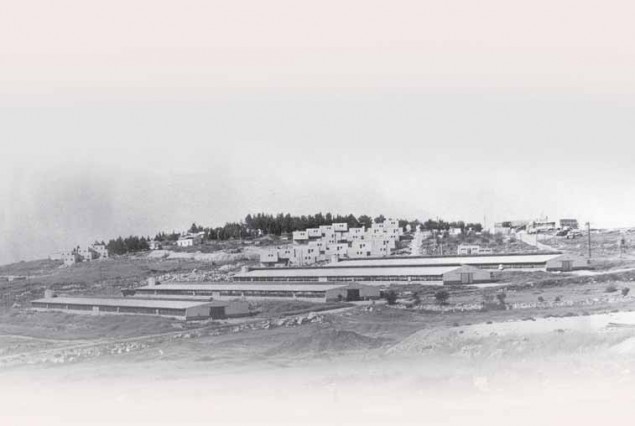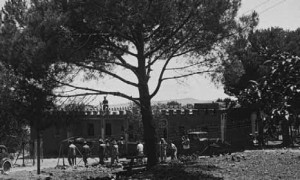The Siege and Fall of Gush Etzion

View of the reconstructed Kfar Etzion
Courtesy of the Kfar Etzion Archives
During the months bridging the vote on the partition plan (November 29, 1947) and the birth of the State of Israel (May 15, 1948), Gush Etzion came under siege. The defenders of Gush Etzion were the only ones who stood between the Jordanians and Jerusalem.
December 11, 1947: A convoy was attacked on the road leading through Bethlehem and past Solomon’s Pools. (See map on page 36.) Ten defenders were killed.
January 5, 1948: Mothers and children from Kfar Etzion and Massuot Yitzchak were evacuated to Jerusalem with the aid of the British.
January 14, 1948: Abdul Khader El-Husseini led hundreds of local Arabs in the first major attack on Gush Etzion. A counterattack was staged and the Arabs fled, but three Jewish defenders died.
January 16, 1948: Thirty-five Jews on foot, bringing supplies up through the Elah Valley to the hills of Kfar Etzion, fell in a heroic battle. They become known as the legendary “Lamed Hey.”
February 24-26, 1948: The Jewish Agency offered to transfer the married men of Kfar Etzion to another settlement to reunite with their families. The proposal was rejected.
March 26, 1948: The Nebi Daniel Convoy was attacked on the outskirts of Bethlehem on its way back to Jerusalem. Fourteen defenders died.
May 4, 1948: The Arab Legion, aided by the British and local Arabs, launched a major attack. Twelve Jewish defenders were killed.
May 12, 1948: The Jordanian Legion and thousands of local Arabs launched the final lethal attack on Kfar Etzion.
May 13, 1948: After a long and bitter battle, the gates were stormed and the defenders of Kfar Etzion sought a ceasefire. They were assembled in the heart of the kibbutz and told they would be photographed before captivity. Suddenly they were fired upon. Aliza Feuchtwanger wrote, “I jumped into a ditch . . . It was an officer of the Legion who saved me . . . [and] demanded that I show him where the arms caches were. When we passed by the doorway of the shelter [where there were wounded and those caring for them] . . . he put a grenade in my hand, pulled out the pin and ordered me to throw it into the shelter. I held the grenade in my hand . . . prepared to kill myself rather than to obey this order. The officer took it . . . and threw it himself into the shelter . . .”
Four defenders of Kfar Etzion remained alive. They were among the 260 defenders of Gush Etzion, including those of Ein Tzurim, Massuot Yitzchak and Revadim, who were taken into captivity in Jordan, where they stayed for nine to eleven months. Women were released earlier.
May 14, 1948: Gush Etzion succumbed. The last transmission from Gush Etzion was “Malkah naflah” — “The Queen [a code name for Gush Etzion] has fallen.” The Arabs pillaged and destroyed the four kibbutzim.

The central building, a former German monastery, at Kibbutz Kfar Etzion Photo: Kluger Zoltan/Israel Government Press Office
May 15, 1948: The State of Israel was born. Ben-Gurion declared, “. . . If there is a Jewish Jerusalem today . . . the Jewish people owe their gratitude first and foremost to the defenders of Gush Etzion. . .”
June 7, 1967: Gush Etzion was liberated by the Israel Defense Forces during the Six-Day War.
September 27, 1967: The children of Kfar Etzion, and from other kibbutzim of Gush Etzion, returned to resettle Kfar Etzion.
2012: Today there are fifteen residential communities, moshavim and kibbutzim in the hills of Gush Etzion, plus two urban communities—Efrat and Beitar—that include native Israelis and immigrants from around the world, survivors of the Shoah and Prisoners of Zion, national-religious, Chareidim and secular Jews. “The children returned to their borders” (Jeremiah 31:17).
Adapted from The Etzion Bloc in the Hills of Judea by Aryeh Routtenberg (Kfar Etzion, 1993), English book edited by Sandy Amichai. With information from the Gush Etzion Regional Council.
Toby Klein Greenwald is a journalist, educator and community theater director.
